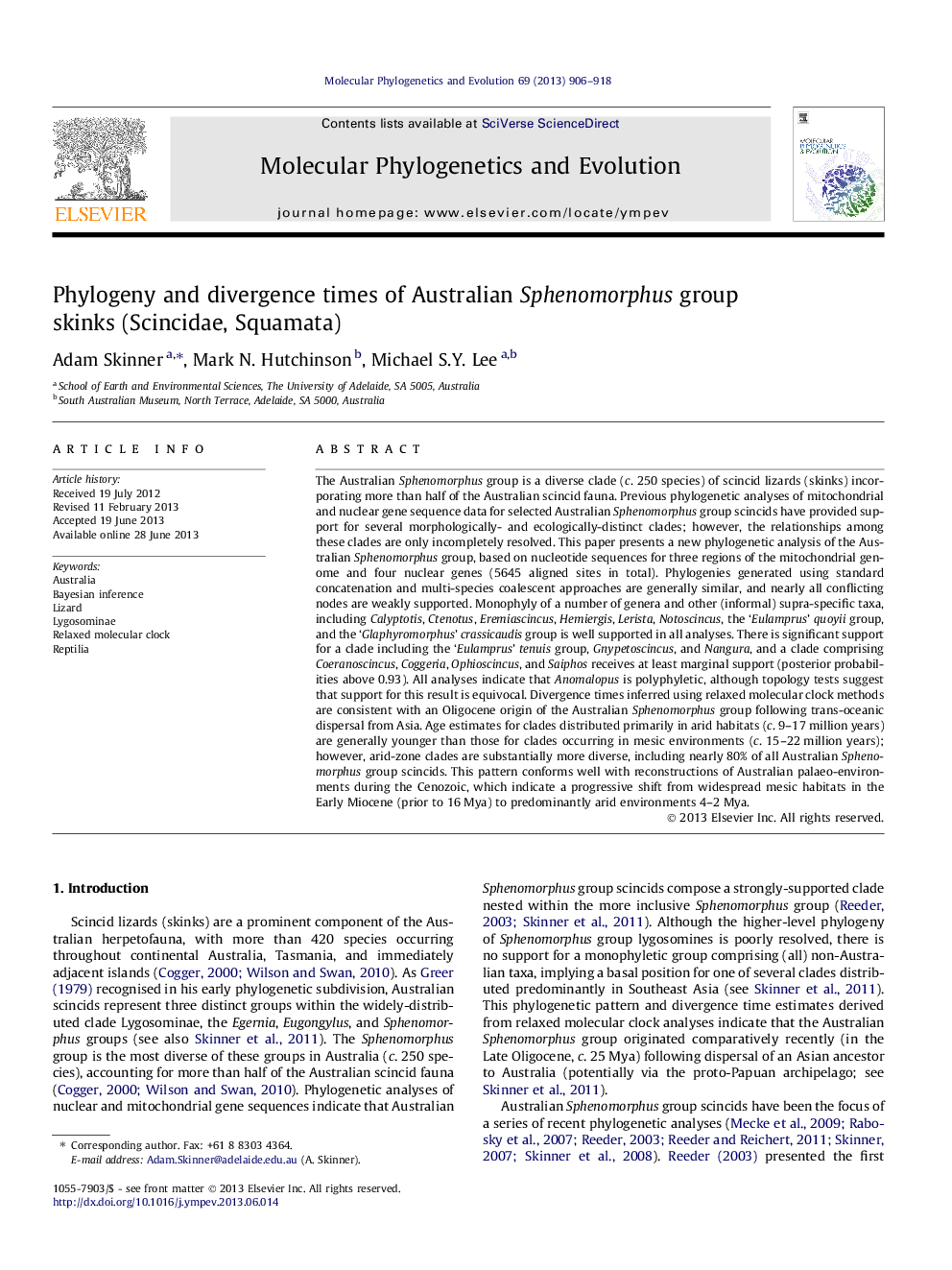| کد مقاله | کد نشریه | سال انتشار | مقاله انگلیسی | نسخه تمام متن |
|---|---|---|---|---|
| 5919712 | 1164270 | 2013 | 13 صفحه PDF | دانلود رایگان |

- Phylogeny inferred from nuclear and mitochondrial gene sequences (5645Â bp in total).
- Monophyly of several genera and other (informal) supra-specific taxa well supported.
- Eualmprus and Anomalopus are polyphyletic.
- Pattern of diversification conforms well with palaeo-environmental reconstructions.
The Australian Sphenomorphus group is a diverse clade (c. 250 species) of scincid lizards (skinks) incorporating more than half of the Australian scincid fauna. Previous phylogenetic analyses of mitochondrial and nuclear gene sequence data for selected Australian Sphenomorphus group scincids have provided support for several morphologically- and ecologically-distinct clades; however, the relationships among these clades are only incompletely resolved. This paper presents a new phylogenetic analysis of the Australian Sphenomorphus group, based on nucleotide sequences for three regions of the mitochondrial genome and four nuclear genes (5645 aligned sites in total). Phylogenies generated using standard concatenation and multi-species coalescent approaches are generally similar, and nearly all conflicting nodes are weakly supported. Monophyly of a number of genera and other (informal) supra-specific taxa, including Calyptotis, Ctenotus, Eremiascincus, Hemiergis, Lerista, Notoscincus, the 'Eulamprus' quoyii group, and the 'Glaphyromorphus' crassicaudis group is well supported in all analyses. There is significant support for a clade including the 'Eulamprus' tenuis group, Gnypetoscincus, and Nangura, and a clade comprising Coeranoscincus, Coggeria, Ophioscincus, and Saiphos receives at least marginal support (posterior probabilities above 0.93). All analyses indicate that Anomalopus is polyphyletic, although topology tests suggest that support for this result is equivocal. Divergence times inferred using relaxed molecular clock methods are consistent with an Oligocene origin of the Australian Sphenomorphus group following trans-oceanic dispersal from Asia. Age estimates for clades distributed primarily in arid habitats (c. 9-17Â million years) are generally younger than those for clades occurring in mesic environments (c. 15-22Â million years); however, arid-zone clades are substantially more diverse, including nearly 80% of all Australian Sphenomorphus group scincids. This pattern conforms well with reconstructions of Australian palaeo-environments during the Cenozoic, which indicate a progressive shift from widespread mesic habitats in the Early Miocene (prior to 16Â Mya) to predominantly arid environments 4-2Â Mya.
Journal: Molecular Phylogenetics and Evolution - Volume 69, Issue 3, December 2013, Pages 906-918